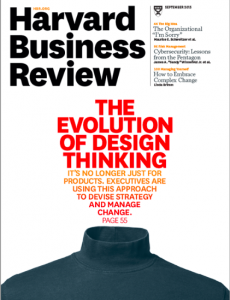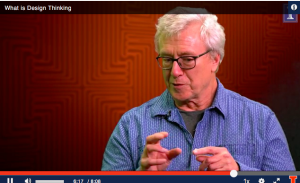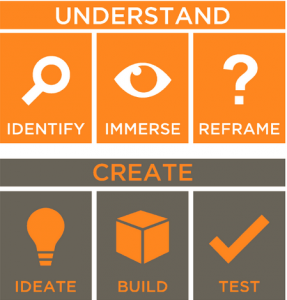Readings
This week, we read an article called “Design Thinking” by Tim Brown of the Harvard Business Review. I found this article to be incredibly insightful as it highlighted an industry leader in design thinking, a firm called IDEO. IDEO focuses on closely observing actual problems and creating innovative solutions from there, rather than creating a solution and trying to market it to the masses. The article cites how designers are now being asked to create ideas, not simply dress them up. This article really set the stage for the presentation we had in class from the student group Design for America. I understand that effective product design is about understanding the problem at it’s deepest level.

Furthermore, we watched a video interview between our very own Vishal Sachdev with Professor David Weightman, who has a background in industrial design and a wealth of experience in product design. He talked about the matrix between desirability, viability, and feasibility when determining where the “sweet spot” of good design resides. Furthermore, he focused on the responsibility that designers have to create not only effective products, but products that are mindful of our resources and planet. He summed about critical design thinking in a couple sentences, “Understanding what other people are about is a very important part of what a designer needs to do. Observing and inquiring gives you insights into unmet needs at the moment – and that’s the time you start ideating.”

Guest Speaker
As I mentioned, we had the University’s Design for America team come in and give us a workshop on the actual design thinking process that they go through when creating a new idea. They narrowed down our market to the visually impaired, and gave us four unique ‘clients’ we could cater our ideas to. My group chose a visually-impaired college students, who’s blindness affects her ability to attend social events at school.
The process they shared with us was truly eye-opening for me (and was completely relevant to the readings)! Instead of going straight into products, they had us spend time simply writing down our assumptions, pain points, potential solutions, etc. on sticky notes. By the end of this brainstorming process, our work station was covered in colorful sticky notes!

However, I saw how DFA’s process began to narrow down solutions and opportunities until our idea was right there in front of us. It was amazing looking through the DFA America page and reading their Process Guide which addresses how to apply the skills and values of human-centered design to address social challenges.
Prototype
We ended up creating a unique walking stick attachment for our client. We recognized that we didn’t want to ‘reinvent the wheel’ by creating an entirely new walking stick. Rather, we designed a modular attachment, that clips over the stick’s base, that can give it a wide new range of functionality, including Bluetooth, NFC, emergency calling, GPS, etc.

I realized that creating a unique prototype was only half the battle. As I explored the IDEO U homepage, I noticed how much emphasis they put on sharing the story, or crafting a production narrative to inspire others toward actions. Keeping this mind, we tried to present our product as not just a simple model made out of pipe cleaners and PVC, but rather a tool that could truly ease the life of visually-impaired clients everywhere. We wanted to sell our story, not just our product. This is an important lesson that I hope to carry into my actual semester project!

Hey Ajie!
I actually took an industrial design class taught by Professor David Weightman and the design strategies introduced by DFA were the same strategies were practiced in industrial design. As you said, understanding the end user and how the product fits within their lifestyle is essential in creating a useful, often beautiful, product.